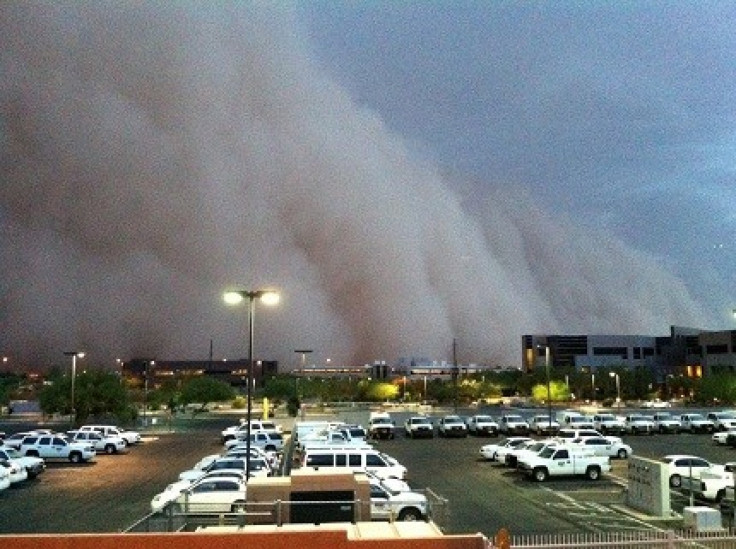The Giant Phoenix Dust Storm, Explained

The massive storm that rushed across Phoenix last night with a wall of dust at least 5,000 feet high might look crazy, but the phenomenon is not all that uncommon in southern Arizona.
And it has a name derived from Africa: haboob.
Here are several books that help explain what you saw:
1) Years ago haboobs roamed the southern edge of the Sahara and had never even heard of Arizona, but they made an etymological leap across continents in the mid-1980s when weather reporters in the Southwestern state observed that the giant sandstorms were the same as those in Africa, Sam Lowe writes in his book You know you're in Arizona when ... (Globe Pequot, 112 pages, 2005). Because haboob is a much more exotic word than sandstorm, the term became part of the language.
Whatever you call them, the storms are mighty spectacles, Lowe says. They form in the deserts of northern Mexico and southern Arizona, they gather strength and tons of dirt, grit, and sand as they move north. By the time they get to Phoenix, these awesome clouds of dust can stretch miles across and rise thousands of feet above the desert floor.
2) The name is derived from the Arabic word hebbe, meaning blown, C. Donald Ahrens notes in Essentials of Meteorology: An Invitation to the Atmosphere (Cengage Learning, 485 pages, 2008).
The haboob forms as cold downdrafts along the leading edge of a thunderstorm lift dust or sand into a huge, tumbling dark cloud that may extend horizontally for over a hundred kilometers and rise vertically to the base of the thunderstorm, Ahrens writes. Spinning whirlwinds of dust frequently form along the turbulent cold air boundary, giving rise to sightings of huge dust devils and even tornadoes. Haboobs are most common in the African Sudan (where about 24 occur each year) and in the desert Southwest of the United States, especially in southern Arizona.
3) Haboobs can make driving, especially on highways, really dangerous.
The rapid changes in winds in southern Arizona usually happen in the late afternoon or early evening and are difficult to predict, Allen Howard Perry and Leslie Symons write in Highway Meteorology (Taylor & Francis, 209 pages, 1991). They promote virtually blinding walls of dust across major highways of southern Arizona and represent an extremely dangerous hazard.
4) And to wrap up, a literary reference. In his modern poetry collection Fragments of a Myth (Time Being Books, 106 pages, 2001), Charles Muñoz has a poem For Edward Abbey.
He was grit in every air conditioner. He was the Great Arizona Haboob. He was that dust storm, Muñoz says.
Have more books to add to this list or knowledge to drop? Do so in the comments below.
© Copyright IBTimes 2024. All rights reserved.











